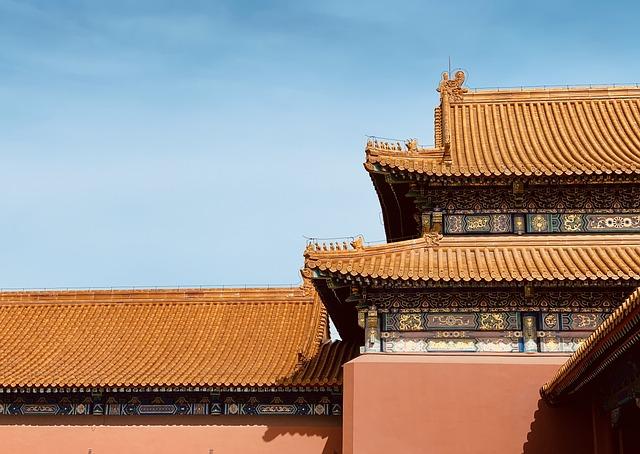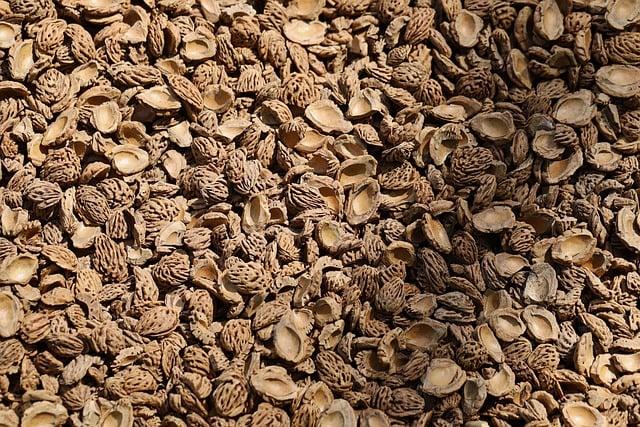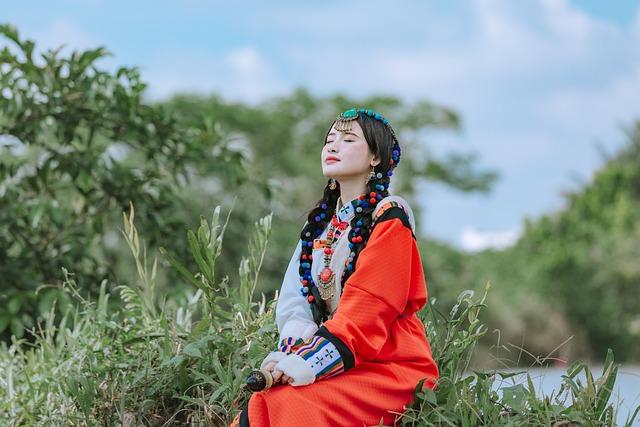In recent times, the dialog surrounding the repatriation of looted artifacts has received momentum, with vital consideration attracted to the treasures of the Kingdom of Dahomey, a historic West African empire.After many years—if now not centuries—of displacement, an important choice of those cultural artifacts have begun to go back to their origins, sparking hope and igniting debates about responsibility, cultural heritage, and the results of colonialism. The New York Instances explores this pivotal second in historical past: following the distinguished go back of Dahomey’s misplaced treasures, what tendencies have transpired? as communities have interaction in a strategy of reclamation and recovery, the repercussions resonate some distance past the artifacts themselves, prompting a broader mirrored image on possession, identification, and the duties of establishments within the fashionable international. This text delves into the aftermath of the Dahomey treasures’ go back, highlighting key stakeholders, ongoing demanding situations, and the transformative possible of those long-lost cultural symbols.
Dahomey’s Cultural Renaissance Following the Go back of Looted Artifacts
The go back of looted artifacts to Dahomey has ignited a cultural renaissance that has captivated now not best native communities but in addition the worldwide target market. Following the historical repatriation, the artifacts, as soon as symbols of loss and cultural erosion, had been remodeled into beacons of heritage and delight. The federal government and cultural establishments have initiated systems aimed toward holding the historical past encapsulated in those artifacts whilst inspiring a brand new technology of artists and students. Native museums are hoisting exhibitions that now not best show those important items but in addition delve into their tales, showcasing the wealthy legacy of Dahomey via workshops, performances, and academic projects.
This revival extends past the partitions of museums; it’s being felt within the streets of Cotonou and Abomey,the place the spirit of group and cultural joyful celebration has surged. Projects equivalent to cultural gala’s, typical performances, and artwork gala’s have sprung up, highlighting now not best the returned artifacts but in addition the ability of native artisans and performers. The engagement of the formative years in cultural practices is significantly noteworthy, signaling a reinvigoration of conventional arts. Those occasions have created alternatives for native companies, larger tourism, and promoted a more potent sense of identification some of the folks of dahomey. The ripple results of this renaissance are obtrusive throughout more than a few sectors, demonstrating the profound have an effect on of reclaiming cultural heritage.
The Adventure of Repatriated Artwork: From Museums to Their Ancestral Properties
The go back of looted art work to its homeland marks an important turning level within the conversation surrounding cultural heritage and repatriation. As artifacts from the Kingdom of Dahomey make their long ago house,there are a number of issues at play. Cultural restitution isn’t simply about bodily relocation; it includes a dedication to therapeutic historic wounds and addressing the narratives which have been formed through colonialism. Many native communities at the moment are grappling with how perfect to combine those artifacts into their cultural practices and schooling techniques, making sure that they aren’t best preserved but in addition celebrated.
This transition raises advanced questions concerning the function of museums in an international context. Whilst establishments have operated as custodians of artwork and tradition, their newfound responsibility contains collaborative partnerships with descendant communities. enticing those communities comes to cautious making plans and open discussion,enabling a shared imaginative and prescient for the way forward for the artifacts. One of the most rising topics come with:
- Group Involvement: Native voices are crucial in curating the narrative round their heritage.
- Moral Show: Creating respectful techniques to showcase repatriated artifacts inside of ancestral areas.
- Training Methods: Enforcing projects to percentage the historical past and that means of the artwork again house.
As Dahomey reviews the coming of its cultural treasures, the have an effect on on native identification and delight is palpable. Communities are witnessing a renaissance in their ancestral tales, main to bigger consciousness and appreciation in their heritage. The repatriation procedure serves as an risk to redefine cultural relationships and draw new contours round the concept that of possession, stewardship, and communal legacy.
The go back of artifacts to Dahomey has ignited a profound cultural renaissance inside of the area people. Those valuable pieces, as soon as looted and scattered throughout world museums, now serve now not best as historic symbols however as catalysts for reconnecting folks with their heritage. Via exhibitions and academic systems,citizens are enticing in conversations about their previous,resulting in a revitalization of cultural delight. Significantly, the go back has fueled projects equivalent to:
- Group Workshops: Fostering conventional crafts and storytelling.
- Inventive Collaborations: encouraging native artists to include returned artifacts into their paintings.
- Heritage Fairs: celebrating native historical past with performances and exhibitions.
moreover, the have an effect on of those returned pieces extends to the commercial panorama of the area.As native museums achieve global consideration, tourism has surged, offering a much-needed spice up to the financial system.Guests are drawn now not best to the artifacts themselves but in addition to the wealthy narratives in the back of them. Bearing in mind this, the federal government and more than a few NGOs have begun making an investment in infrastructure tasks aimed toward supporting this newfound passion. A comparative research of tourism expansion pre- and post-return illustrates this shift:
| 12 months | Vacationer Visits (Estimated) | Financial Have an effect on (USD) |
|---|---|---|
| 2020 | 25,000 | $1 million |
| 2021 | 50,000 | $2.5 million |
| 2022 | 100,000 | $5 million |
This knowledge underscores a tangible development narrative, showcasing how the go back of artifacts isn’t simply an act of restitution however a strategic cornerstone for fostering financial and social development in Dahomey.

Demanding situations and Triumphs within the Preservation of cultural Heritage
The go back of looted cultural artifacts, equivalent to the ones from Dahomey, represents a huge victory within the ongoing struggle to reclaim and maintain cultural heritage. But, the adventure in opposition to restitution is fraught with complexities that embrace each demanding situations and triumphs. The initial excitement surrounding the artifacts’ go back will have to cope with the truth of integrating them again right into a society nonetheless grappling with colonial histories. Communities face a large number of hurdles, together with the desire for good enough conservation amenities, tutorial projects to boost consciousness about their importance, and the emotional hard work fascinated with addressing previous injustices.
Within the wake of those returns, a number of crucial components emerge that spotlight each the stumbling blocks and the successes surrounding this factor:
- Group Engagement: Involving native populations in discussions about heritage promotes a deeper connection to their tradition.
- Criminal Frameworks: Nationwide and global regulations will have to adapt to successfully improve restitution efforts.
- Cultural Training: Methods that teach each locals and guests concerning the artifacts deepen appreciation and foster preservation.
- Investment Projects: Monetary improve for museums and cultural establishments performs a a very powerful function in making sure enduring heritage control.
| Triumphs | Demanding situations |
|---|---|
| Higher world consciousness about cultural heritage problems. | Balancing native traditions with fashionable preservation ways. |
| A success partnerships between international locations for artifact go back. | Resistance from positive establishments to relinquish regulate. |
| Bolstered native identities via reclaimed artifacts. | Assembly the excessive prices of right kind recovery and care. |

International Implications for the Artwork International: A Shift Against Moral Repatriation
The new go back of looted artifacts, in particular the numerous assortment from Dahomey, marks a pivotal second within the ongoing discourse surrounding artwork repatriation. This match highlights a broader pattern inside the artwork international, pushing establishments globally to think again the moral implications of possessing artifacts bought right through colonial instances. Quite a lot of museums and galleries at the moment are forced to rethink their collections and have interaction extra responsibly with supply communities. Stakeholders, together with artists, historians, and cultural organizations, are advocating for transparency and discussion to make certain that artwork projects are rooted in admire and reciprocity, somewhat than exploitation.
The results of this motion prolong past mere restitution. The world over, we witness a recalibration of cultural international relations, the place countries are construction new partnerships in line with shared heritage somewhat than historic grievances. As museums and cultural establishments start to put in force repatriation insurance policies, a number of key components emerge:
- Group Engagement: Establishments at the moment are fostering direct interplay with supply communities to know their wishes and views.
- Cultural Training: Higher emphasis is being put on instructing the general public concerning the historic contexts of works of art and the results of colonialism.
- Collaborative Exhibitions: Many museums are growing platforms for co-curated exhibitions that contain indigenous voices and provide a broader narrative.

Long run Instructions: Strengthening Partnerships for Cultural Recovery and Training
The go back of the looted artifacts from Dahomey marks an important milestone within the ongoing discussion about cultural heritage and restitution. This pivotal second encourages a reevaluation of ways establishments international have interaction with communities suffering from colonial legacies. Collaborative efforts between governments, museums, and native communities will have to prioritize cultural recovery and schooling to verify the returned pieces don’t seem to be simply seen as mere artifacts however celebrated as necessary elements of cultural identification.To facilitate this procedure, the status quo of partnerships with international cultural organizations can improve native experience and assets, fostering a richer working out of the historic context and importance of those treasures.
Shifting ahead, enticing and supporting native voices turns into crucial to maintaining passion and connection to the returned artifacts. This can also be accomplished via more than a few projects, together with:
- Group workshops eager about conventional crafts and storytelling.
- Collaborative exhibitions that mix historic narratives with recent cultural expressions.
- Teaching programs aimed toward colleges to encourage long term generations about their cultural heritage.
| Initiative | Goal |
|---|---|
| Group Workshops | Revive conventional talents and customs. |
| Collaborative Exhibitions | Foster working out of cultural importance. |
| Training Methods | Have interaction kids in heritage exploration. |
To Wrap It Up
the go back of looted artifacts to Dahomey marked an important milestone within the ongoing discussion surrounding the restitution of cultural heritage.The high-profile handover used to be now not simply a symbolic gesture however a catalyst for a broader dialog about possession, identification, and historic justice. Because the communities of Dahomey and the bigger world target market replicate at the implications of those returns, questions on stewardship, preservation, and the function of museums within the twenty first century loom massive. The path forward remains complex, as stakeholders grapple with the legacies of colonialism and the desire for collaborative efforts to honor and give protection to cultural heritage. The arena watches carefully, now not simply to look what occurs in Dahomey, however to watch how those pivotal moments will form the way forward for cultural restitution international.
Source link : https://afric.news/2025/03/28/dahomey-celebrated-looted-arts-return-what-happened-next-the-new-york-times/
Writer : Isabella Rossi
Submit date : 2025-03-28 11:45:00
Copyright for syndicated content material belongs to the related Source.



